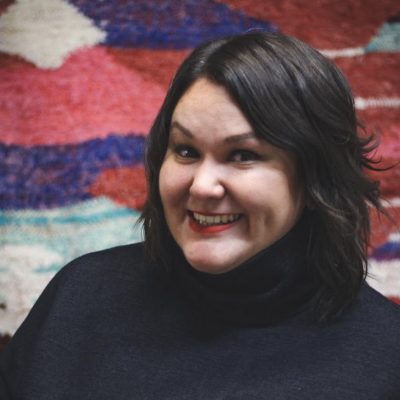Details
Article
“From the places that you have been instructed to ignore or rendered unable to see come the stories that change the world, and it is here that culture has the power to shape politics and ordinary people have the power to change the world.”
Rebecca Solnit, Hope in the Dark, 2004
In 2009, author Chimamanda Ngozi Adichie gave a TED talk, titled “The danger of a single story.” In her speech, Adichie clearly and eloquently illustrated why we must consider the different facets of people and places to prevent ourselves from falling into the trap of simplifying and labeling that leads to dehumanization.
How does a single story come into existence? “Show a people as one thing, as only one thing, over and over again, and that is what they become,”Adichie explains, describing the power over narratives as “the ability not just to tell the story of another person, but to make it the definitive story of that person.” Perpetuating a single story has consequences: “It robs people of dignity. It makes our recognition of our equal humanity difficult. It emphasizes how we are different, rather than how we are similar.”
There is the danger of a binary narrative.
In addition to the danger of a single story, there is also the danger of a binary narrative. Typically, conflict is described in this way: Two parties to the conflict, two warring sides, maybe equal aggressors, maybe an aggressor on one side, a victim on the other. But there are never just two sides to a conflict. In any context, there is always a prism of conflict lines and story lines.
But stories can also be used to empower and to humanize.
All those publicly speaking and writing about conflict today: Look closely at the rift. You will find that its edges are not straight – they are frayed. In some places, they still touch, they even connect. Find the people who are situated here, the ones who are on neither side but in between, living in conflicting realities simultaneously. They are holding the tension of several truths coexisting at the same time, and thereby, they are holding space for possibility. These are the people who will solve the conflict from within. Don’t speak or write about them – amplify their voices. Help their stories and realities unfold, so that their knowledge and experiences will shape our understanding of the situation. As Adichie says: “Stories have been used to dispossess and to malign. But stories can also be used to empower and to humanize. Stories can break the dignity of a people, but stories can also repair that broken dignity.”
As a Harvard-trained Community Organizer, I teach Public Narrative and Relational Leadership. As Process Facilitator, I work on conflict transformation in diverse groups. But I am writing this not just because I have worked in so-called conflict zones. I myself come from the fault lines: My ancestors stem from divided countries. There were always borders running through our families. My immediate relatives were perpetrators, survivors, displaced persons, migrants, oppressors, refugees – some of them several of the above, over the course of a lifetime. I could never take sides – there are just too many. And you know what? This is normal. It is the reality of many, if you look closely. And because it is the reality (several realities, actually), you cannot deny it or run from it.
Let go of the binary. Allow for complexity.
If you are in any position of power – politically, socially, economically, culturally – and you are perpetuating the binary narrative of a conflict, you are causing real harm: Because you are oppressing the voices and denying the lived reality of the people who have been risking their lives, often for decades, working across the fault lines of the conflict, making sacrifices to achieve freedom and justice for all.
I ask of you: When you look at a conflict, speak or write about it, let go of the binary. Allow for complexity. Embrace ambiguity, and in the prism of the fault lines, you just might find possibility – and hope.





